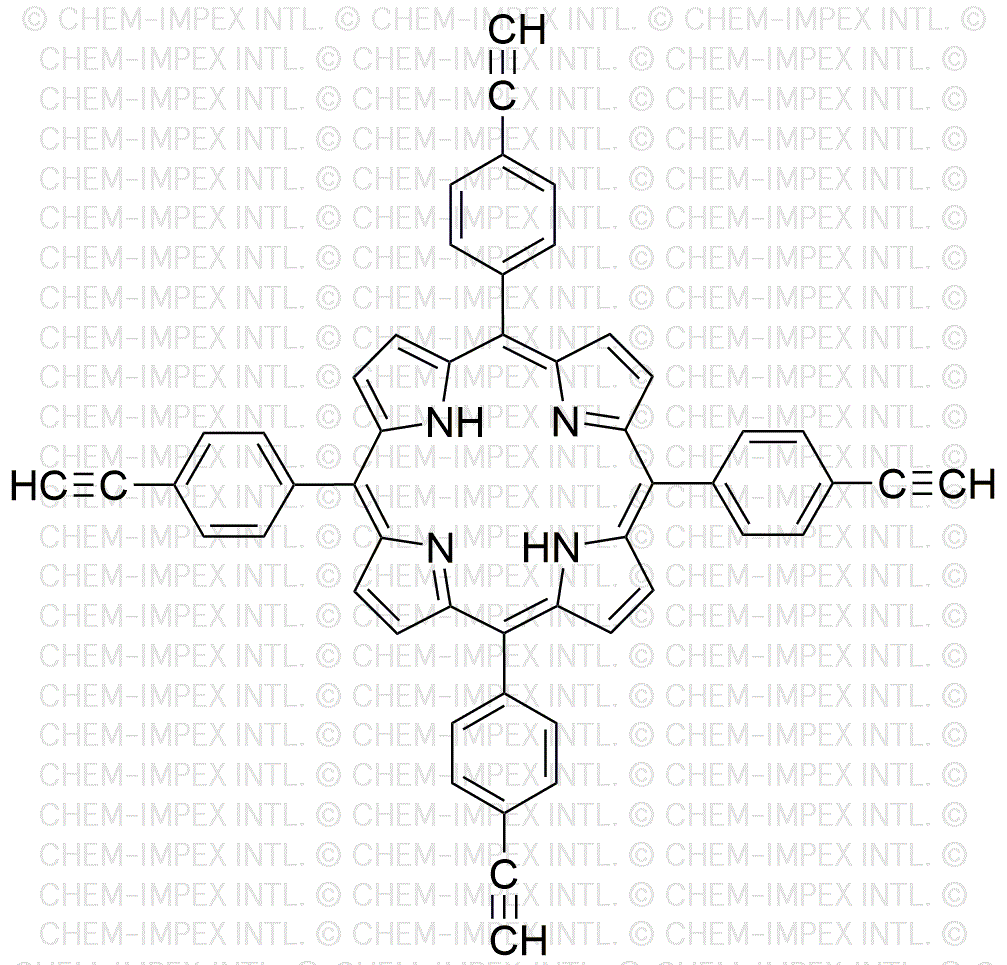5,10,15,20-(Tetra-4-ethynylphenyl)porphyrin is widely utilized in research focused on:
- Photodynamic Therapy: This compound is effective in targeting cancer cells. Its ability to absorb light allows it to generate reactive oxygen species when illuminated, which can selectively destroy tumor cells.
- Solar Energy Conversion: It serves as a key component in organic solar cells. The compound's unique structure enhances light absorption and energy transfer, improving the efficiency of solar energy conversion.
- Sensors and Biosensors: Its properties make it suitable for developing sensors that detect environmental pollutants or biological markers, providing a reliable method for monitoring health and safety.
- Organic Electronics: This chemical is used in the fabrication of organic light-emitting diodes (OLEDs) and organic photovoltaics, contributing to advancements in flexible and lightweight electronic devices.
- Research in Catalysis: It plays a role in catalyzing various chemical reactions, particularly in organic synthesis, offering a more efficient pathway compared to traditional catalysts.
General Information
Properties
Safety and Regulations
Applications
5,10,15,20-(Tetra-4-ethynylphenyl)porphyrin is widely utilized in research focused on:
- Photodynamic Therapy: This compound is effective in targeting cancer cells. Its ability to absorb light allows it to generate reactive oxygen species when illuminated, which can selectively destroy tumor cells.
- Solar Energy Conversion: It serves as a key component in organic solar cells. The compound's unique structure enhances light absorption and energy transfer, improving the efficiency of solar energy conversion.
- Sensors and Biosensors: Its properties make it suitable for developing sensors that detect environmental pollutants or biological markers, providing a reliable method for monitoring health and safety.
- Organic Electronics: This chemical is used in the fabrication of organic light-emitting diodes (OLEDs) and organic photovoltaics, contributing to advancements in flexible and lightweight electronic devices.
- Research in Catalysis: It plays a role in catalyzing various chemical reactions, particularly in organic synthesis, offering a more efficient pathway compared to traditional catalysts.
Documents
Safety Data Sheets (SDS)
The SDS provides comprehensive safety information on handling, storage, and disposal of the product.
Product Specification (PS)
The PS provides a comprehensive breakdown of the product’s properties, including chemical composition, physical state, purity, and storage requirements. It also details acceptable quality ranges and the product's intended applications.
Certificates of Analysis (COA)
Search for Certificates of Analysis (COA) by entering the products Lot Number. Lot and Batch Numbers can be found on a product’s label following the words ‘Lot’ or ‘Batch’.
Número de catálogo
Número de lote/lote
Certificates Of Origin (COO)
This COO confirms the country where the product was manufactured, and also details the materials and components used in it and whether it is derived from natural, synthetic, or other specific sources. This certificate may be required for customs, trade, and regulatory compliance.
Número de catálogo
Número de lote/lote
Safety Data Sheets (SDS)
The SDS provides comprehensive safety information on handling, storage, and disposal of the product.
DownloadProduct Specification (PS)
The PS provides a comprehensive breakdown of the product’s properties, including chemical composition, physical state, purity, and storage requirements. It also details acceptable quality ranges and the product's intended applications.
DownloadCertificates of Analysis (COA)
Search for Certificates of Analysis (COA) by entering the products Lot Number. Lot and Batch Numbers can be found on a product’s label following the words ‘Lot’ or ‘Batch’.
Número de catálogo
Número de lote/lote
Certificates Of Origin (COO)
This COO confirms the country where the product was manufactured, and also details the materials and components used in it and whether it is derived from natural, synthetic, or other specific sources. This certificate may be required for customs, trade, and regulatory compliance.


